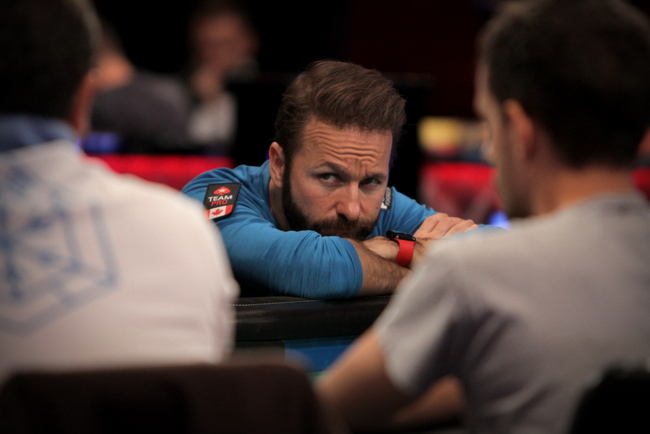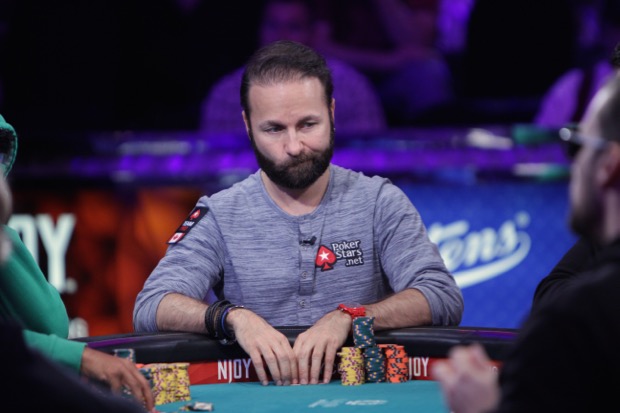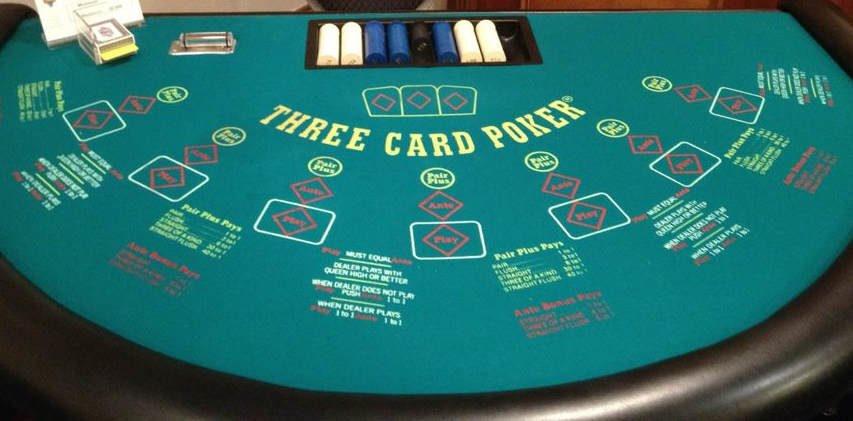Online Poker Mtt Tips
The early stage of a tournament is very similar to a cash game. The stacks are still very big in relation to the blinds. The main difference to a cash game is that we normally can’t re-buy in a tournament. In a cash game we can re-buy as long as our bankrolls allow. For this reason, in tournaments it’s much more important not to lose all our chips (in a single hand), because this would mean elimination from the tournament.
The multi-table poker tournament – or ‘MTT’ – is a staple of both the online and live poker worlds and without it the poker industry wouldn’t be where it is today. With a set buy-in but potentially gigantic return the MTT may be poker’s greatest innovation and continues to draw hundreds of thousands of player to events, large. Poker Strategy starts with poker training videos, poker podcasts, lessons, tips, and strategy. Learn in-depth online poker strategy at one of the most popular training sites online. Tournament Poker Edge provides in-depth MTT training from the top live and online pros. Become a winning poker player here! Poker Strategy starts with poker training videos, poker podcasts, lessons, tips, and strategy. Learn in-depth online poker strategy at one of the most popular training sites online. Tournament Poker Edge provides in-depth MTT training from the top live and online pros. Become a winning poker player here! Enroll into Our MTT 101 Course for 40% OFF:to Crush Micro Stakes Multi Table Tournam.
In order to play this stage of the tournament successfully it is helpful to read the article on the no-limit hold’em full ring strategy (or big stack strategy/BSS), because very similar principles apply.
Tight is Right
Many inexperienced players think that they can play even marginal hands in the early phase of a tournament as the blinds are still very low and they can see the flop cheaply. This way of thinking is wrong! In fact, the opposite is correct. There is little or no reason to play marginal hands, precisely because the blinds are still small in relation to the stacks. We play this phase extremely tightly, i.e. we only play our good hands, thus exploiting the loose style of our opponents.
In particular when we are in early positions we should play only premium hands such as JJ, QQ, KK, AA and AK. If we concentrate on these hands we will often be able to knock one or two bad players out of the tournament, simply by virtue of having the better hand. In later positions we can also play smaller pairs and suited connectors such as 7♥6♥.
A common mistake is playing cards that are easily dominated against raises from an early position. This occurs most often with hands such as AQ, KQ and AJ. These hands are weak when we are playing them against hands that are typically raised in early position (EP).
The tight game usually has two objectives:
- Firstly, we want to get into the pot as favourites and win our opponents’ chips. Good starting hand selection makes our decisions in later rounds of betting considerably easier.
- Secondly, we want to create a suitable image for the later phases of the tournament when the blinds are higher, the image of a “rock” who plays only the really good hands. If we are subsequently only dealt bad hands, this image will enable us to play a steal or a bluff.
There is one problem with this way of playing, though: when we are dealt good hands, we often get less action from our opponents. If a player continually folds and raises only once every twenty hands, even the most unobservant of opponents will become suspicious and fold the weak hands they would normally have resisted folding against other players.
Although this type of game is generally to be recommended, it does have a further disadvantage for good and very good players. They could make something out of weaker hands such as smaller pairs, e.g. 4♦4♣, or high Broadway cards, e.g. A♠Q♠.
The optimum type of game thus includes playing a few hands that are not quite as strong but which nevertheless have potential. This applies above all to hands played in the later positions.
- Small Pairs
Small pairs, i.e. all starting hands from 22 to 99 can rake in a respectable number of chips as soon as they become a set. If we don’t hit a set, though, these hands are worth nothing. With cards like these we try to see the flop cheaply and hope for a set. “Cheaply” means that we either limp if we are in middle or late position or are one of the blinds, or that we even call a raise up to a maximum of a tenth of our stack if we are in late position. In early position we always fold because, out of position and pre-flop, small pairs are too weak to hold out against a possible raise.
- High Pairs
it’s from TT to AA should always be raised pre-flop, not only because they can make us a lot of money, but also because they need to be protected by a raise so that our opponents aren’t able to improve their hands cheaply. If players before or after us raise more than once then we can fold hands such as TT and JJ, and even if there is only a single raise after ours we should consider folding this hand and waiting for a better opportunity. However, this decision depends largely on the opponent.
- Big Broadway cards
A♣K♦, A♠Q♦ & co. are also strong hands, similar to high pairs, and should correspondingly be played similarly pre-flop – AK like aces and kings, and AQ like a pair of tens, for example.
- Small Broadway Cards
Small Broadway cards such as AT, KJ, QT, JT etc. must be played with extreme caution in this phase of a tournament. The first rule is: if the small Broadway cards are not suited, or if there has already been a raise, then fold! An exception would be the situation in which we are in late position with six players ahead of us who only paid the big blind or called a minimum raise: then, naturally, we could also play. The big problem with these hands is that they are often dominated by better hands. For example, K♦J♦ or K♣Q♣ will seldom win against hands such as A♠J♥ or A♣Q♦ . With small Broadway hands we mainly want to hit monsters like straights or flushes, which is why it’s important to see the flop cheaply with these hands. If we only hit a weak pair or not at all then we can quickly fold.
- Suited Connectors
Hands like 6♥7♥ or J♠9♠ can be played similarly to small pairs. Obviously we are speculating on a flush or a straight here.
- Other Starting Hands
All starting hands not listed above are folded without exception.
Stealing the Blinds

In the early phase of a tournament the blinds are unimportant as they are very small in relation to our stack. In the early phase of a normal PokerStars tournament we have a stack of 1,500 chips and the blinds are 10/20. In other words, we have 75BBs, and winning the blinds increases our stack by only 2%. And this must be seen in conjunction with the risk of losing a lot of chips if we go wrong.
For this reason we should pass up on stealing the blinds with weak and marginal hands in the early phase of a tournament. However, this does not mean that we shouldn’t attack the blinds when we have stronger hands such as pairs, aces with strong kickers and suited connectors.
The post-flop Game
The flop is a decisive moment in Hold’em, and the really important decisions are made here.
Just like the pre-flop game, the post-flop game is also very tight. In general we can, as mentioned above, keep to the recommendations made in connection with the full ring no-limit cash game (BSS) as our solid basic strategy. Nevertheless, let’s look at some special situations.
Heads-up on the flop
- Pre-flop Aggressor
As the pre-flop aggressor we should make a continuation bet regardless of the flop and our position. How much to bet is a question of playing style; a continuation bet will normally be ½ to ¾ of the pot.
- Not the Aggressor, Out of Position
If we hadn’t grasped the initiative pre-flop (i.e. we only called another player’s bet), then as a rule we should fold weak hands when we’re out of position. With strong hands we can decide whether to:
- check/call,
- check raise or
- bet out.
Check/call has the advantage of keeping the pot small and avoiding a re-raise if the hand isn’t strong enough.
Mtt Poker Strategy
- Not the Aggressor, in Position
If we are not the aggressor and in position we have considerably more opportunities for playing our own game, but normally, we should still fold a weak hand.
With strong drawing hands like flush draws and straight draws it’s a good idea to vary one’s game. Let’s assume that the pre-flop aggressor has made a continuation bet: we now have the following options:
- We can semi-bluff (i.e. raise), in which case we should usually also bet the turn if our opponent checks it.
- We can also simply call on the flop and wait to see the turn card. If this is helpful we can then bet on the turn or raise our opponent’s bet.
With very strong hands such as top pair/top kicker or better we also have various options:
- If our opponent checks we should always bet, for the simple reason that the pot is still relatively small and we want to generate a big one. We can make a classic value bet here.
- If our opponent makes a continuation bet on the flop we should vary our game: sometimes we’ll call, at other times we’ll shoot back with a raise.
Multiway flops
- With the Initiative
If we didn’t hit on the flop there’s not usually much point in betting if we have several active opponents. This applies even more so if we’re out of position.
However, if we’re holding a strong hand we should always bet on the flop. It’s a big mistake to risk everybody checking when we’re playing a strong hand against several opponents. This gives away a free card, which could in the end give an opponent a better hand.
- Without the Initiative
Especially when we’re playing against several opponents we should always fold weak hands. Playing on with hands such as small or medium pairs is a common beginner’s mistake. Good hands, though, should be protected against drawing hands by means of bets and raises.
Drawing hands can often be played very well against several opponents. The reason for this is that the pot odds are better when several players call and we will possibly win more chips if we hit our draw.
- Limped Hands

In the early phase, merely calling before the flop is quite legitimate. Similarly, in an early position we can call with a variety of hands. Amongst these are small and medium pairs, suited connectors, and even hands such as [ahqh] or [kdqd]. Another possibility is calling when one or more players have already called before us. Depending on our position, we can do this with a lot of hands. In particular when we’re on the button and several other players have called, we can limp with just about any cards.
If we’re in middle or late position, the players before us have folded, and we decide that we want to play the hand, then as a rule we should raise.
Online Poker Mtt Tips Game
In limped pots we should only continue playing if the flop is really good. It is hardly worthwhile bluffing in these pots because they’re very small and it’s difficult to gauge the opponents’ hands as the range of limped hands is extremely broad.
Small pairs are especially suitable for limping, if possible when other players are already in. However, small pairs must always be folded if we don’t hit our trips.
Turn and River
On the turn the pot is often very big in relation to our remaining effective stack.
“Effective stack size” is the term for the size of the stack of the player with the fewest chips who is active in that hand. If, for example, there are still three players left in the hand, and
- player 1 has 1,000 chips,
- player 2 has 500 chips, and
- player 3 has 200 chips,
then the effective stack size is 200 chips.

Rule: if the remaining effective stack is the same size as or smaller than the current pot, it is (almost) always right to play all-in if we want to bet again.
When the effective stack is small
With a strong hand we should always bet or go all-in. The aim is to get paid for our good hands. Especially in tournaments we will always see players who throw their chips around carelessly and who will also pay us if we show strength. The goal is of course to win as many chips as possible with our good hands.
With a weak hand we have to weigh up whether we want to go all-in or not. This problem can be solved mathematically:
- Assuming that the effective stack is exactly the same size as the pot and we’re sure that we won’t win the pot if we’re called, then our opponent must fold at least half the time in order to make the push profitable.
When the effective stack is very big
If the effective stack is still very big in relation to the pot then the game becomes much more complex, especially if we’re out of position.
- In Position …
… in some cases it’s right to check even strong hands such as overpairs on uncoordinated boards. The reason for this is simply that we don’t want to make the pot too big, and we thus avoid making a difficult decision if our opponent raises.
On coordinated boards there would be less sense in checking because if our opponent is holding a draw he would accept the free card right away.
- Out of Position …
… we should often play carefully if our opponent shows a lot of strength, even when we’re holding strong hands such as top pair. This keeps the pot small but doesn’t stop our opponent from continuing a bluff. The disadvantage is that our opponent may use the opportunity to get a free card, or even that he ends up making a better hand after a (cheap) turn bluff.
Multiway
If there are several opponents in the pot we must obviously play more carefully. Draws with which we called the flop but which haven’t hit will lose considerable value on the turn because only one more card will be dealt – the river. We should fold our draws on the turn against bets that constitute a substantial percentage of our stack and of the pot.
We should continue playing very strong hands such as sets and top two pair aggressively.
Conclusion:
In the early stage the aim is to win chips with our very strong hands and at the same time avoid marginal situations as far as possible.
Join us on our Discord channel.